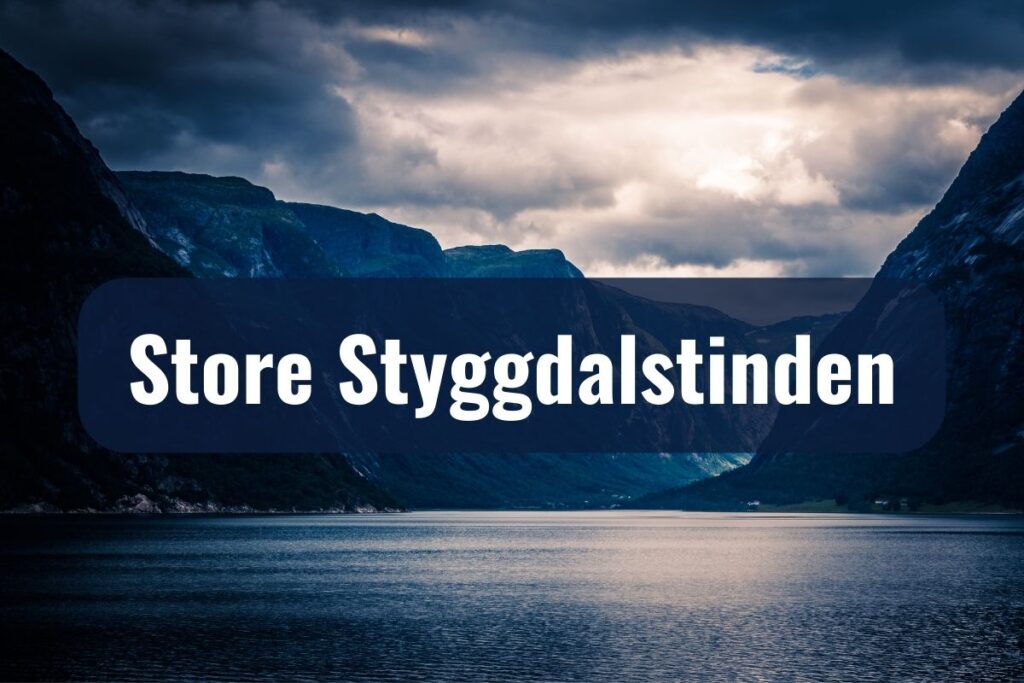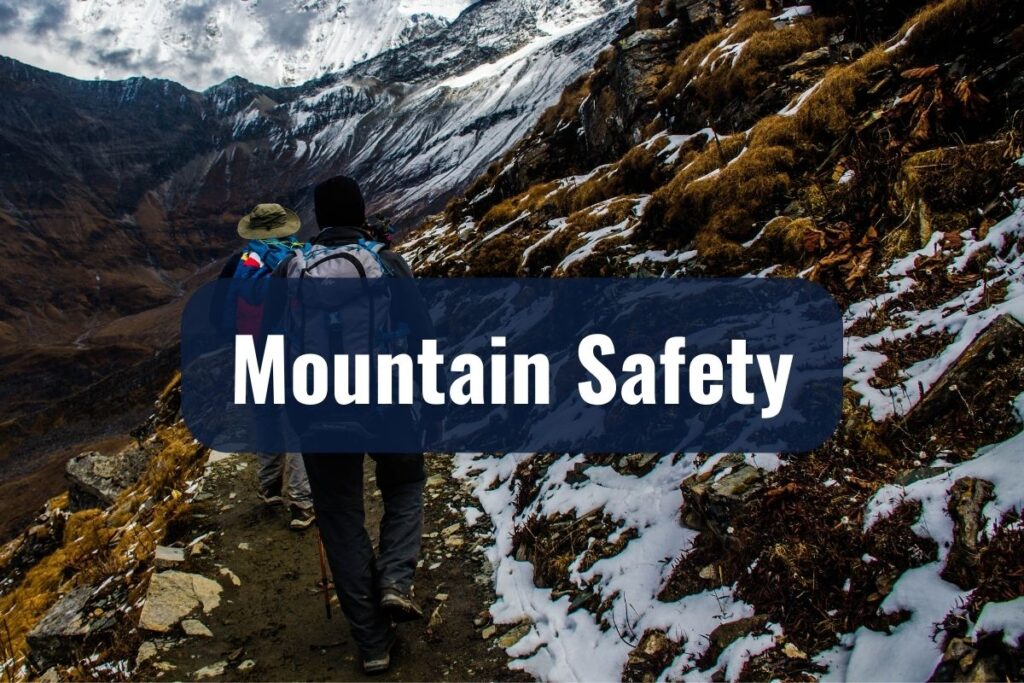Norway, a country carved by time, ice, and the sheer force of nature, presents one of the most striking landscapes in the world. With its dramatic fjords cutting through the land, dense verdant forests, and crystalline lakes, it is the soaring mountains that often capture the imagination of those who visit or decide to call Norway home.
As we delve into the specifics of some of Norway’s highest peaks, you will discover that each mountain has its unique narrative. They are silent witnesses to millennia of Earth’s history, each peak holding secrets and stories that are as captivating as the vistas they offer.
Key Takeaways
- Galdhøpiggen (2,469 meters above sea level) is the tallest mountain in Norway
- Peaks like Galdhøpiggen, Glittertind, and Store Skagastølstind are among the country’s highest and most iconic.
- Lesser-known mountains like Skarstind and Store Styggdalstinden offer serene and challenging experiences.
- Beyond their heights, many peaks hold significant cultural and historical importance.
- Ensuring safety through preparedness and knowledge is paramount when exploring Norway’s mountainous terrains.
Norway’s Mountainous Heritage
Long before they became popular hiking and skiing destinations, these mountains played a crucial role in shaping the culture, livelihood, and even the mythology of the Norwegian people. They served as natural barriers, shaping trade and migration patterns, and were often revered as sacred sites or the dwelling places of gods in ancient Norse legends.
For the modern adventurer, these mountain ranges offer more than just scenic beauty. They’re a promise of thrilling hikes, challenging climbs, and memories that last a lifetime.
But beyond the adrenaline, they are also a sanctuary of tranquility, a place where one can reconnect with nature, contemplate the vastness of the cosmos, or simply breathe in the crisp Scandinavian air.
Galdhøpiggen
Rising high above the Norwegian terrain, Galdhøpiggen stands as a magnificent testament to the country’s rugged landscape. This giant, with its imposing stature and panoramic views, offers a unique blend of nature’s grandeur and a fascinating geological tale.
Elevation and Rank
Soaring to an elevation of 2,469 meters above sea level, Galdhøpiggen proudly claims the title of the tallest mountain in Norway. But its significance doesn’t stop at the national level.
This monumental peak also holds the distinguished title of being the highest in all of Northern Europe, making it a beacon for mountaineers and nature enthusiasts from across the continent and beyond.
A Glimpse into the Past
The historical significance of Galdhøpiggen is etched in the layers of rock that form its structure. During the last ice age, this behemoth was entirely enshrouded by a thick sheet of ice, a frozen testament to the climatic shifts our planet has undergone. As the ice retreated, it sculpted and shaped the terrain, giving Galdhøpiggen the distinctive features that we see today.
Trailblazers and Adventurers
For those who are drawn to its heights, various trails beckon. The most popular route to its summit starts from the Juvasshytta cabin. This path, while challenging in sections, is accessible even for those with moderate fitness levels.
As adventurers make their ascent, they’re rewarded with breathtaking views, each step revealing a new facet of Norway’s scenic beauty. The summit itself is a vantage point like no other, offering panoramic vistas of snow-clad peaks, verdant valleys, and the distant shimmer of glacial lakes.
Glittertind

In the heart of Norway’s expansive mountain ranges, Glittertind stands as a shimmering jewel, its name itself suggesting a certain sparkling allure. With its distinctive glacial cap and ever-evolving height, this mountain offers a blend of natural beauty and intriguing geological narratives.
Elevation Dynamics
Glittertind’s elevation, a commendable 2,465 meters, often comes with an asterisk. While it secures its position as the second-highest peak in Norway, there’s an interesting twist to this tale.
The thick glacial cap atop Glittertind is subject to seasonal changes, sometimes making the mountain slightly taller than even Galdhøpiggen. This fluctuating elevation has fueled friendly debates among geologists and mountaineers alike, pondering which of the two peaks truly claims the crown at different times of the year.
A Crown of Ice
The glacier gracing Glittertind’s summit is not just a point of curiosity but also a vital component of the mountain’s ecosystem. This ice cap, a relic from colder epochs, plays a significant role in influencing local weather patterns and providing a unique habitat for flora and fauna.
As the seasons shift, the glacier transforms, sometimes gleaming under the summer sun, and at other times, expanding its icy reach during the colder months.
Ascending the Glittering Peak
For those with an adventurous spirit, the climb up Glittertind offers a mesmerizing experience. As hikers traverse its slopes, they encounter a diverse array of terrains – from gentle grassy inclines to more demanding rocky stretches. And, as one nears the summit, the icy expanse of the glacier presents its own set of challenges and thrills.
Store Skagastølstind
Deep within Norway’s breathtaking mountain range lies Store Skagastølstind, a peak that’s as majestic in its presence as it is rich in history. Often referred to by locals as simply “Storen,” this mountain embodies the spirit of Norwegian mountaineering, presenting challenges and rewards that have beckoned climbers for generations.
The Mountain’s Stature
With an elevation reaching 2,405 meters, Store Skagastølstind confidently claims its position as the third-highest peak in Norway. Its silhouette, characterized by sharp ridges and dramatic drops, stands in stark contrast to the surrounding landscape, a testament to the geological forces that shaped it.
A Legacy of Mountaineering
Store Skagastølstind holds a special place in the annals of Norwegian alpine history. In 1876, a group of intrepid climbers, led by the legendary William Cecil Slingsby, embarked on a journey to conquer its challenging terrain.
Their successful ascent wasn’t just a personal achievement; it marked a significant milestone in Norwegian mountaineering, inspiring countless others to take on the challenges of the high mountains.
The mountain’s ridges and routes have since witnessed numerous feats of human endurance and skill, each ascent adding a new chapter to Storen’s storied past. From traditional climbing techniques to modern alpine tactics, the routes up Store Skagastølstind have been the testing grounds for generations of mountaineers.
Embarking on the Ascent
For those aiming to scale Store Skagastølstind, the journey is as much about the climb as it is about soaking in the mountain’s rich history. The traditional route, which traces the path of Slingsby’s pioneering ascent, offers climbers a blend of technical challenges and breathtaking vistas. As one ascends, the views of the adjacent valleys and peaks unfold, each step revealing a new perspective on Norway’s vast and varied landscape.
Store Styggdalstinden

In the vast array of Norway’s towering peaks, Store Styggdalstinden emerges as a true emblem of the wild, untamed beauty that the country’s mountains encapsulate. With a name that translates to “Big Ugly Valley Peak,” this mountain might not sound inviting at first, but its challenging terrain and unparalleled views make it a must-visit for every mountaineering enthusiast.
The Mountain’s Profile
Reaching an elevation of 2,387 meters, Store Styggdalstinden might not be the tallest, but it certainly ranks among the most challenging peaks in Norway. Its stark, steep faces, combined with the intricate ridges that snake their way to the summit, present climbers with a series of challenges that require skill, determination, and a genuine respect for the mountain’s might.
A Terrain Like No Other
What truly sets Store Styggdalstinden apart is its unique and rugged terrain. Unlike the more popular, and often-trodden paths of other Norwegian peaks, this mountain offers routes that are less frequented, providing a sense of solitude and a genuine connection with nature. The steep inclines, combined with sections of exposed rock, mean that every step on this mountain is both a challenge and a reward.
For climbers, the ascent often becomes a dance between rock and sky, where every handhold and foothold must be chosen with care and where the mountain’s unpredictable nature can offer surprises at every turn.
The View from Above
Those who persevere and reach the summit of Store Styggdalstinden are treated to an unparalleled panorama. The bird’s-eye view of the valleys below, interspersed with lakes, rivers, and other peaks, paints a picture of Norway’s landscape in its rawest form. The sheer vastness of the vista, combined with the crisp mountain air, creates an ambiance of pure exhilaration.
Skarstind
Nestled amidst Norway’s tapestry of soaring peaks and sprawling valleys, Skarstind may not dominate the skyline like some of its more celebrated neighbors, but it possesses a charm and allure that’s distinctly its own. Often overshadowed in discussions about Norway’s highest mountains, Skarstind offers a serene, less-trodden path for those eager to discover the country’s hidden gems.
Measuring the Peak
Standing tall at 2,373 meters, Skarstind holds its own in terms of elevation. While it doesn’t break into the top tier of Norway’s highest peaks, its stature still commands respect, providing ample challenges and rewards for trekkers and climbers.
A Mosaic of Terrains
Skarstind’s landscape is a delightful mix, a mosaic of terrains that offers varied experiences as one ascends. From lush alpine meadows that burst into a riot of colors in the warmer months to the rugged rock faces that test a climber’s skill, there’s something on this mountain for everyone. Its gentler slopes are a haven for casual hikers, while the more challenging sections beckon seasoned mountaineers.
The Path Less Traveled
One of Skarstind’s greatest appeals lies in its relative seclusion. Unlike some of the more popular peaks, this mountain provides a serene backdrop for those looking to escape the crowds and truly immerse themselves in nature’s embrace.
The trails, often carpeted with a delicate layer of alpine flora, lead adventurers through a realm where the sounds of modern life fade away, replaced by the gentle whispers of the wind and the distant calls of mountain birds.
As one reaches the summit, a sense of accomplishment washes over, not just for the physical feat but also for having discovered a piece of Norway that remains untouched and pristine. From this vantage point, the panoramic views stretch out in every direction, with the tapestry of Norway’s landscape unfolding in all its glory.
Notable Mentions

While peaks like Galdhøpiggen, Glittertind, and Store Skagastølstind often steal the limelight in discussions about Norway’s mountainous wonders, the country is replete with numerous other peaks that, though not the tallest, are undoubtedly worth mentioning. Each of these mountains, with their unique characteristics and histories, contributes to the rich tapestry of Norway’s alpine landscape.
Trolltindan
Tucked away in the Romsdalen valley, the Trolltindan range is often overshadowed by its famous neighbor, Trollveggen, Europe’s tallest vertical rock face. However, the jagged peaks of Trolltindan, often referred to as the ‘Troll Peaks’, present climbers with a series of exhilarating challenges, all while offering breathtaking views of the surrounding landscape.
Snøhetta
Though not among the very highest of Norway’s mountains, Snøhetta holds a special place in the hearts of many Norwegians. Located in Dovrefjell National Park, this iconic peak is not just a popular hiking destination but also plays a significant role in Norwegian culture and history, often being referenced in literature and folklore.
Kongen and Bispen
Literally translating to “The King” and “The Bishop,” these two neighboring peaks in the Romsdal Alps are a treat for the eyes. With their distinctive shapes and proximity, they have become synonymous with the beauty of the region, often serving as the subjects for countless photographs and paintings.
Falketind
A pinnacle of elegance, Falketind was one of the first major mountain peaks to be climbed in Norway. Its sharp edges, combined with the pristine snow that often caps its summit, make it a favorite among alpine enthusiasts, both for its challenges and its ethereal beauty.
Mountain Safety

Venturing into the majestic world of Norway’s mountains is a dream for many. Their towering heights, combined with the pristine beauty of their slopes and valleys, beckon adventurers from all corners of the globe. However, with the promise of unparalleled views and exhilarating experiences comes the inherent responsibility of ensuring safety.
| Safety Aspect | Description |
| Understanding Terrain | Equip yourself with topographical maps and regularly check weather forecasts |
| Equip Yourself | Wear layered clothing and sturdy hiking boots, and always carry an emergency kit |
| Know Your Limits | Maintain good physical fitness, be aware of altitude sickness, and stick to marked paths |
| Emergency Protocols | Keep communication tools like mobile phones or satellite phones handy and always inform someone of your whereabouts and expected return time |
Norway’s mountains, like all alpine environments, present their own set of challenges, and being prepared can make the difference between a memorable adventure and a perilous ordeal.
Understanding the Terrain
Before embarking on any mountain journey, familiarize yourself with the terrain of the chosen peak.
Maps and Guides
Always carry a detailed map of the area. Topographical maps can provide invaluable information about the mountain’s contours, trails, and potential hazards. Additionally, consulting guidebooks or local experts can offer insights into the intricacies of specific routes.
Weather Conditions
The weather in mountainous regions can be unpredictable. A clear morning can swiftly give way to an afternoon storm. Regularly check local weather forecasts and be prepared for rapid changes in conditions.
Equip Yourself
The right gear can significantly enhance your safety in the mountains.
Clothing
Wear layers that can be easily added or removed as temperatures fluctuate. Ensure that your outer layer is waterproof and windproof. Even during the summer, temperatures at higher altitudes can be cold.
Footwear
Choose sturdy hiking boots with good ankle support and a grip suitable for rocky terrains.
Emergency Kit
Always carry a basic emergency kit that includes items like a whistle, a flashlight or headlamp, a first aid kit, and a multi-tool.
Know Your Limits
One of the fundamental principles of mountain safety is understanding and respecting your limits.
Physical Fitness: Ascending a mountain requires stamina and strength. Prepare by engaging in regular cardiovascular exercises and strength training.
Altitude Awareness: As you ascend, the air becomes thinner. It’s essential to be aware of altitude sickness symptoms, which can include headaches, nausea, and dizziness.
Stay on Marked Paths: Established trails and routes exist for a reason. Straying from them can lead to dangerous terrains or areas prone to avalanches.
Emergency Protocols
Despite all precautions, emergencies can occur.
Communication
Carry a fully charged mobile phone, but be aware that reception in mountainous areas can be spotty. In remote areas, consider investing in a satellite phone or an emergency beacon.
Inform Someone
Always let someone know your planned route and expected return time. In case of any unforeseen situations, someone should be aware of your whereabouts.
The allure of Norway’s mountains is undeniable, and while they offer experiences that can be both profound and exhilarating, the importance of safety cannot be overstated. As the age-old saying goes, “The mountains will always be there; the trick is to make sure you are too.” Being prepared, respecting the environment, and prioritizing safety ensures that every adventure is a treasured memory in the making.


